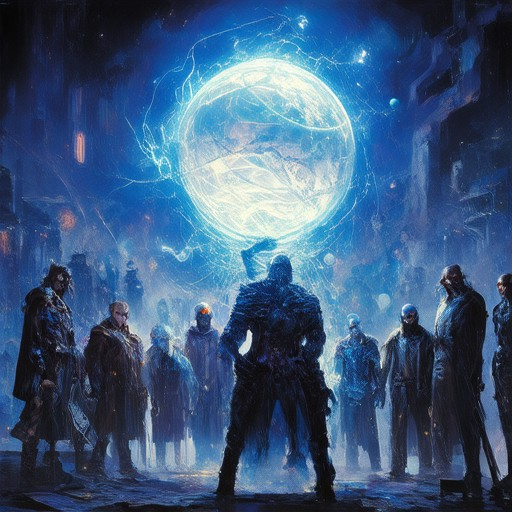Storytelling is the heart of every great work of fiction, allowing writers to captivate readers with compelling narratives, complex characters, and immersive worlds. Whether you’re crafting a novel, a short story, or even a script, mastering effective storytelling techniques can elevate your work from ordinary to extraordinary. In this guide, we’ll explore the essential strategies, structures, and methods that every fiction writer needs to know. From understanding the 5 Cs of storytelling to mastering the 4 types of narrative structures, we’ll delve into the techniques that can transform your storytelling abilities and keep your readers hooked. Discover how to develop rich characters, build suspense, and weave intricate plots that resonate long after the final page. Let’s embark on a journey to unlock the secrets of successful storytelling and create fiction that truly stands out.
Key Takeaways
– Master the “Five P’s” of storytelling: People (relatable characters), Place (immersive settings), Pictures (vivid descriptions), Personalization (tailored connections), and Peril (conflict and danger) to create engaging narratives.
– Structure your story effectively: Use a clear beginning, middle, and end to guide your audience through a compelling journey.
– Infuse your story with Meaning: Convey deeper truths, themes, or societal insights to resonate on a universal level.
– Engage through Emotion: Connect with readers by evoking feelings that deepen their connection to your characters and plot.
– Craft immersive Settings: Use detailed time periods, locations, environments, and cultural backgrounds to transport your readers.
– Develop Complex Characters: Create well-rounded protagonists, antagonists, and supporting cast to drive your story forward.
– Build a compelling Plot: Introduce conflict, inciting incidents, and cliffhangers to maintain suspense and keep readers hooked.
– Explore Themes Thoughtfully: Delve into moral lessons, social commentary, philosophical questions, and emotional cores to add depth to your storytelling.
By integrating these techniques, you can craft stories that captivate audiences, evoke emotions, and leave a lasting impact. For more insights, visit James Whitfield Thomson.

The 5 Cs of Storytelling
The 5 Cs of storytelling are essential elements that contribute to creating an engaging, coherent, and impactful narrative. Here’s a breakdown of each component:
- Consistency : Ensures that all elements of the story—setting, characters, plot, tone, and theme—are unified and cohesive. For example, if the story is set in a medieval kingdom, the characters and conflicts should reflect that environment.
- Conflict : Provides the driving force that propels the story forward. It creates tension and keeps the reader interested. Conflicts can be internal (e.g., a character struggling with a moral dilemma) or external (e.g., a villain threatening the protagonist).
- Character : Involves developing well-rounded, multi-dimensional characters who undergo growth and transformation. A story without meaningful characters often feels flat and lacks emotional investment from the audience.
- Cause : Refers to the inciting incident or event that sparks the story’s action. This element introduces the conflict and sets the story in motion. Without a cause, the narrative lacks direction.
- Coherence : Ensures that the story flows logically and each element connects seamlessly. Coherence allows readers to follow the plot without getting lost or confused.
By focusing on these five components, storytellers can craft narratives that are not only engaging but also structurally sound and emotionally resonant.
The Four Types of Storytelling
Storytelling is a powerful tool used across various fields to convey messages, engage audiences, and inspire action. Below are the four primary types of storytelling, each serving unique purposes and audiences:
- Narrative Storytelling : This type presents events in a chronological order, often focusing on a sequence of actions leading to a resolution. Examples include fairy tales, historical novels, and biographies.
- Dramatic Storytelling : This form emphasizes conflict, character development, and emotional engagement. Plays, films, and television shows are common platforms for this type.
- Conversational Storytelling : Also known as anecdotal storytelling, this style is informal and relatable. It often uses personal experiences or casual stories to share insights or entertainment, like jokes or short anecdotes.
- Expository Storytelling : This type focuses on explaining ideas, concepts, or processes. Educational videos, instructional manuals, and presentations typically use this approach.
Each type of storytelling caters to different audiences and objectives, allowing creators to choose the most effective method for their intended purpose. Whether through narratives, drama, conversation, or exposition, storytelling remains a cornerstone of human communication and connection.
For deeper exploration of storytelling techniques and resources, we invite you to visit our website at James Whitfield Thomson , where you’ll find valuable insights, writing tips, and guides to enhance your storytelling abilities.

Storytelling Techniques
Storytelling is a powerful art form that captivates audiences and conveys ideas effectively. Here are some proven storytelling techniques to enhance your narrative:
- Character Development: Create relatable and multi-dimensional characters. Use detailed descriptions, backstory, and consistent behavior to make your characters stand out.
- Plot Structure: Craft a well-structured plot with a clear beginning, middle, and end. Use conflict, climax, and resolution to maintain engagement.
- DIALOGUE: Write conversations that sound natural. Use unique voices and allow dialogue to reveal character traits and plot points.
- Setting: Utilize the environment to enhance the story. Descriptions should immerse the reader in the world you’ve created.
- Emotional Engagement: Connect with your audience by evoking emotions. Show rather than tell, and use sensory details to create vivid imagery.
In addition to these techniques, consider the following tips for crafting compelling stories:
- Focus on a central theme or message to guide your narrative.
- Use foreshadowing to hint at future events or mysteries.
- Build suspense and intrigue to keep readers hooked.
- Edit and revise to refine your story’s pacing and flow.
For more resources and in-depth guides on storytelling, visit James Whitfield Thomson and explore their wealth of writing tips and insights.

The 5 P’s of Storytelling
The 5 P’s of storytelling are a simple yet effective framework to create engaging and memorable narratives. These elements work together to captivate audiences and leave a lasting impact.
- P for People : At the heart of every great story is a relatable character or characters. Whether it’s a protagonist overcoming challenges or a community coming together, people connect with stories that reflect their own experiences and emotions.
- P for Place : Setting plays a crucial role in storytelling. A vivid setting helps immerse the audience, whether it’s a bustling city, a serene landscape, or a mysterious location that adds intrigue to the plot.
- P for Pictures : Visual elements, whether through descriptions or imagery, bring stories to life. These pictures paint a mental image that stays with the reader long after the story is finished.
- P for Personalization : Tailoring the story to resonate with individual preferences enhances engagement. This could mean addressing the audience’s interests, fears, or aspirations to create a deeply personal connection.
- P for Peril : Every compelling story involves some form of conflict or challenge. This element creates tension and drives the narrative forward, keeping the audience hooked until the resolution.
These five elements work together to create stories that are not only entertaining but also emotionally resonant. By focusing on James Whitfield Thomson ‘s approach to storytelling, we can see how these P’s transform raw material into compelling narratives that capture attention and inspire action.
The Three Pillars of Storytelling
Storytelling is a powerful art form that relies on three fundamental pillars to captivate audiences and convey meaningful messages. These pillars are:
- Structure
- Meaning
- Emotion
1. Structure
A successful story is built on a solid framework that guides the audience through a journey. This framework typically includes a clear beginning, middle, and end, often referred to as the “Three-Act Structure.” The beginning hooks the listener with an intriguing setup, the middle develops conflicts and character growth, and the end resolves the narrative in a satisfying way. A well-structured story ensures that the audience remains engaged and follows the plot effortlessly.
2. Meaning
At its core, storytelling is about conveying a deeper truth or message. This “meaning” can be philosophical, emotional, or societal. Great stories often explore universal themes like love, loss, redemption, or identity. By distilling complex ideas into relatable narratives, storytellers communicate insights that resonate long after the story has ended. For instance, “The Little Prince” delves into the meaning of love and responsibility through its simple yet profound tale.
3. Emotion
Emotion is the heart of storytelling. Without it, a narrative becomes hollow and forgettable. Effective storytelling evokes feelings that connect the audience to the characters and their experiences. Whether it’s joy, sorrow, fear, or hope, emotions create a bridge between the teller and the listener, making the story feel alive. A skilled storyteller knows how to weave emotion into every word and gesture, ensuring the audience feels invested in the outcome.
Understanding and mastering these three pillars allows storytellers to craft tales that are not only entertaining but also impactful and memorable. By focusing on structure, meaning, and emotion, you can create stories that resonate deeply with your audience and leave a lasting impression.
For more insights into storytelling techniques and to explore thought-provoking narratives, visit our literary platform at James Whitfield Thomson .

The Five Key Elements of a Story Explained
A story is a powerful medium that captivates audiences through its structure, character development, and emotional resonance. Below, we delve into the five core elements of a story, expanded into ten essential components that contribute to its effectiveness.
- Setting
- Time Period: The story unfolds within a specific historical context, influencing the characters’ actions and decisions.
- Location: The physical environment plays a crucial role in shaping the narrative, whether it’s a bustling city or a serene countryside.
- Physical Environment: The surrounding world, including weather and landmarks, adds depth to the story’s atmosphere.
- Cultural Background: The societal norms and traditions of the setting often impact the characters’ behaviors and motivations.
- Character
- Protagonist: The central character whose journey drives the plot forward, often facing personal growth or challenges.
- Antagonist: The opposing force or character that creates conflict and propels the story’s tension.
- Supporting Characters: A team or group that aids the protagonist, providing guidance or facing their own arcs.
- Ensemble Cast: Multiple characters who collectively contribute to the story’s complexity and emotional layers.
- Plot
- Conflict: The central struggle or problem that the protagonist must resolve, often leading to growth or transformation.
- Inciting Incident: The event that sets the protagonist on the path toward their goal or confrontation.
- Cliffhanger: A technique that leaves the reader eager for the next chapter, maintaining suspense.
- Resolution: The point where the conflict is resolved, often leaving lasting impacts on the characters involved.
- Theme
- Moral or Message: The underlying idea or lesson the story aims to convey, resonating with the audience on a deeper level.
- Social Commentary: Reflection on societal issues or human nature, offering insight into contemporary concerns.
- Philosophical Questions: The story may explore abstract concepts, prompting readers to reflect on life’s complexities.
- Emotional Core: The emotional heartbeat of the story, connecting with readers on a personal level.
- Structure
- Beginning: Establishes the setting, introduces characters, and sets up the central conflict or goal.
- Middle: Develops the plot, deepens character arcs, and builds towards the climax.
- Climax: The peak moment of tension where the outcome is uncertain, heightening the stakes.
- End: Resolves loose ends and leaves a lasting impression, often reflecting on the themes explored.
In conclusion, understanding these ten elements of a story allows writers to craft narratives that resonate deeply with readers. By masterfully balancing setting, character, plot, theme, and structure, authors can create compelling stories that engage audiences and leave a lasting impact.





0 Comments